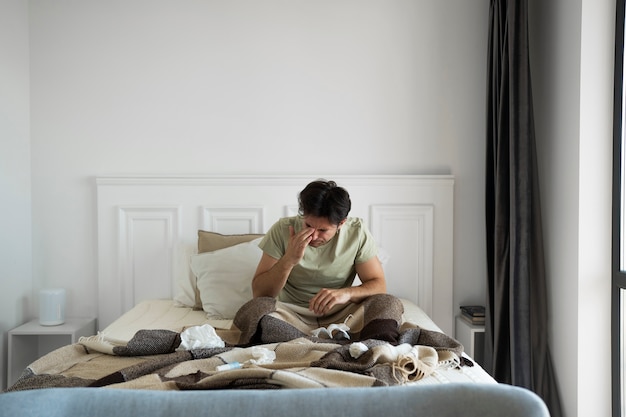
Allergies can really throw a wrench in your day-to-day life, especially when you’re just trying to kick back and catch some Z’s in your bedroom. Many people don’t realize that allergens aren’t just hanging around outside—they can also be all over your home, creating a cocktail of health issues. Common symptoms from allergies include headaches, a stuffy nose, a scratchy throat, coughing, or itchy eyes. Bedroom allergies can be especially annoying, robbing you of a good night’s sleep and posing risks for those with asthma or other breathing problems. Fortunately, there are ways to tackle these allergens and reclaim your space. Before diving into allergy-proofing your bedroom, it’s important to understand what kinds of allergens you’re dealing with.
### Types of Allergens
To effectively deal with allergies, it’s crucial to know what you’re up against. Here are five common types of allergens that could be causing trouble in your bedroom:
1. **Mold Spores**
Mold thrives in dark, damp spots like closets, bathroom cabinets, and window moldings. If ignored, airborne mold spores can lead to various symptoms. To stay healthy, you must keep mold growth in check.
2. **Dust Mites**
These tiny creatures hang out in bedding, mattresses, cushions, pillows, upholstery, and even stuffed toys. Your bedroom is practically their paradise! It’s important to address dust mites early to avoid health issues similar to those caused by mold.
3. **Animal Dander**
Made up of proteins from your pet’s fur or skin, dander can cling to carpets and bedding. It lingers in the air and can be a headache for anyone aiming to maintain an allergen-free room.
4. **Roaches**
Cockroaches are one of the most allergy-triggering pests. They easily adapt and can make a home in your bedroom, causing allergic reactions in some people.
5. **Pollens**
Pollen, often associated with the fall and spring seasons, can sneak into your bedroom. It doesn’t just come through open windows and doors but also through your air systems. It can even hitch a ride on clothing or pets.
### Ways to Eliminate Allergens
Reducing and banishing allergens from your bedroom can be accomplished with these simple strategies:
1. **Allergy-Resistant Bedding**
Switch to organic, hypoallergenic bedding and mattresses. This can significantly reduce allergens in your bedroom. Use dust mite covers that act as a barrier to keep these critters out. Hypoallergenic pillows are also helpful. Choose pillows filled with cotton or other washable materials to avoid mold and mildew build-up.
2. **Air Purifiers**
Air purifiers remove airborne particles, fumes, and allergens, improving the air quality in your room. Look for purifiers with a HEPA filter that captures 99.97% of particulates.
3. **Healthy Humidity Levels**
Keep humidity levels between 30-50% to avoid dry air that irritates your respiratory system and moist air that can foster mold growth. Utilize appliances to maintain optimal humidity in your bedroom.
4. **Clean Regularly**
Keeping your room clean is essential to minimize dust mites and other allergens. Avoid keeping food in your bedroom, vacuum regularly with a HEPA filter, and dust furniture with a damp cloth. Use non-toxic cleaners like baking soda, lemon, and vinegar.
5. **Reduce Clutter**
Get rid of clutter, such as extra pillows, storage bins, magazines, and stuffed toys, which can collect dust and allergens. Use hypoallergenic materials for decorating. If mold isn’t an issue, consider adding houseplants that filter the air.
6. **Maintain Personal Hygiene**
Always shower before bed to keep sweat and dirt out of your sheets. A clean bedroom helps prevent allergens, keeping it a tranquil escape rather than an allergen haven.